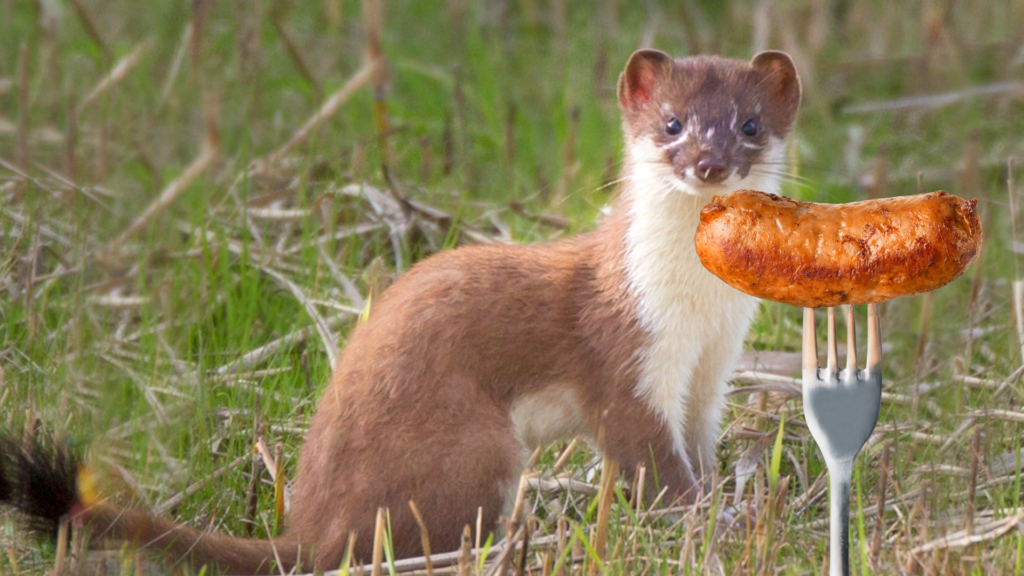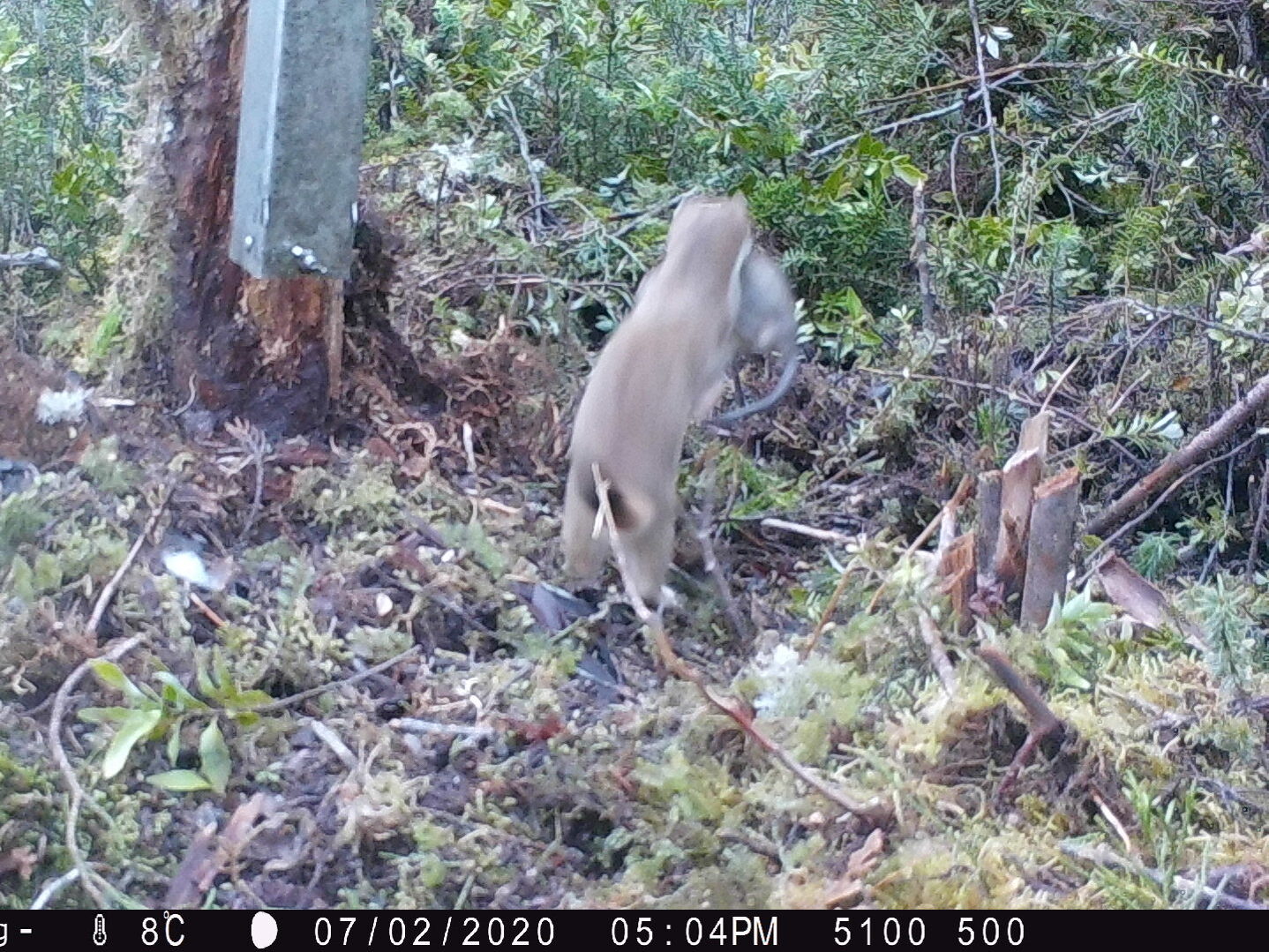Stuff them in a roll or slap them on a piece of white bread; sausages are a Kiwi classic. Stoats and feral cats have a taste for them too.

In a recent trial, researchers investigated whether these introduced predators would find and eat sausage bait, and also if native species would also be attracted to it, too.
We know feral cats and stoats threaten NZ’s native wildlife, but effective control techniques are limited.
The existing methods include kill trapping and secondary poisoning from aerial 1080 operations (i.e. eating a poisoned rat). Current baits, such as fishmeal bait or hand-made minced meat baits, have either uncertain effectiveness or are labour-intensive to make.
Ready-made baits that could be hand-laid or aerially placed and that are irresistible to targets would enhance the predator free toolkit.
Enter three Department of Conservation researchers: Jenny Rickett, Penny Wallace and Elaine Murphy. The trio focused their recent trials on non-toxic versions of sausage bait, and the results published in the New Zealand Journal of Ecology show promise.
Yuck or yum?
To target stoats and cats, 50 non-toxic sausages made of rabbit or chicken were carefully placed in the Fiordland National Park to target stoats and in the Mackenzie Basin for cats. The bait density was reasonably low, with one bait per 25 hectares. Trail cameras were placed near each bait to capture any activity.
The researchers watched as stoats and cats *literally* took the bait.
Stoats that came into view of the camera didn’t always find the bait, but 95% of those that did, ate or took it away.
The sausage attracted several non-target species – though they largely ignored it after a sniff or two. The only native bird that showed any real interest was the South Island kakaruwai (robin). These little birds pecked at small amounts of meat and ate maggots off the bait.
Meanwhile, in the cat trial, cats found the bait more often than stoats but ate the bait slightly less, only 62% of the time. The baits were between 1 and 12 days old when eaten.

Most cat detections were actually the same two individuals who eagerly consumed the sausage with barely a chew.
No native species were observed interacting with the bait during the trial, but hedgehogs and a ferret did eat several.
Not the wurst option
Far from it – this trial showed exciting potential for growing the predator free toolkit.
The trials provide confidence that stoats and cats can find baits that are hand-laid at a relatively low density and eat them up.
The researchers write, “The high rate of bait takes indicates that the baiting density used during this [stoat] trial might result in a good knock-down of stoat numbers, although trials with toxic baits are needed to confirm this.
The number of cats involved in the trial was small, and two individuals dominated the results.
“However, the two cats readily consumed both chicken and rabbit baits at a wide range of age/time since placed.”
Most promisingly, there was little consumption of baits by non-target species. The only native species to interact, the robin, only pecked at small amounts of meat, and the researchers thought it was possible they would not eat enough of a toxic bait to get a lethal dose.
The researchers concluded that future field trials would be needed to test the effectiveness of the bait with added toxins that have an odour and taste.

